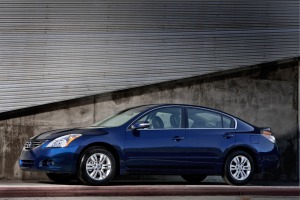How To Get an Auto Loan During the Credit Crunch
Part 3: The New Reality: Higher Rates, Stiffer Terms

The second step in getting a new-car loan is to lay out your purchase strategy. This requires understanding how lenders will treat your creditworthiness and being ready to purchase the vehicle that's right for you.
"The most important thing is to know how good a loan you should get," said Lucy Duni, vice president of consumer education for TrueCredit.com, a service provided by Chicago-based TransUnion.
Right up front, you're going to have to swallow hard and realize that obtaining a loan has gotten more expensive for nearly everybody. Just about every borrower now is going to have to pay higher interest rates, for shorter terms, and otherwise cope with stiffer lender requirements for auto loans than they might have had to a year ago — or even a few months ago.
Interest rates had eased a bit through this year since 2007, in part reflecting the success of automakers' cut-rate loan incentives last summer in keeping the market from derailing completely. But now, typical "prime" borrowers might encounter interest rates around 6 percent to 7 percent for an auto loan, said John Ulzheimer, president of consumer education for Credit.com. Buyers with average credit scores could get rates of 9 percent to 11 percent, and "subprime" borrowers might have to pay around 16 percent.
Come With Cash
Almost every borrower outside the top credit tiers will have to make a down payment, or a bigger down payment than before — on the average about 10 percent higher than they would have had to make a year ago. Lenders are requiring this to improve their own "loan-to-value" ratios by boosting the quality of the auto loans on their books.
The typical loan in August was for only 88 percent of a vehicle's value, compared with 95 percent in July, according to Federal Reserve data. In 2006, some loan-to-value ratios got as high as 101 percent, when buyers could wrap taxes, fees and even some of their old car loan into the new financing, according to RDQ Economics, a New York-based research firm.
Also, lenders are restricting the length of loans. They believe that term lengths got away from them during the recent heady days of loose credit — when consumers could get as long as seven years to pay off a car that they likely wouldn't be driving that long.
And now, your application will be fly-specked for anything that might prompt lenders to tighten the screws even more. These could include problems with mortgage payments, recent interruptions in employment and other hiccups that could raise red flags with loan officers whose No. 1 priority these days is to make only loans that are exceedingly safe.
New Rules for Every Class of Borrower
Here's how the situation has changed for each of the three basic categories of borrowers.
Prime borrowers can still get auto loans with little hassle. And the very cream of this crop can still get the car and the deal they want at terms just as favorable as ever. "But these are the real exceptions now," said Ellsworth "Ellie" Clarke, president of Bank of America Dealer Financial Services.
But required credit scores for the best terms typically have risen to 720 or even 740 from 700, said Jesse Toprak, executive director of industry analysis for Edmunds.com. And prime borrowers may be reduced to deals of no longer than 66 or even 60 months compared with the previous 72 or even 78 months.
Average borrowers are the vast swath of Americans whose balance sheets and financial habits put them squarely in the middle of the population. They have to come up with a 10 percent or even 15 percent down payment now, whereas a year ago, or even six months ago, they may have been able to finance more than 100 percent of the value of the vehicle with no money down, said Jesse Toprak, executive director of industry analysis for Edmunds.com.
"The era of the 72-month auto loan may also be over," said Toprak.
Subprime borrowers have accounted for about 20 percent of new-car buyers in recent years, according to Bank of America's Clarke. But this much-maligned group — whose woes in the U.S. mortgage market have been broadly blamed for knocking the world financial system off its pins — now face lots of extra obstacles as auto companies and lenders pick through their applications much more carefully these days.
"Subprime borrowers can still get loans, but you might have to make other sacrifices," said Toprak. "One way around the problem is to offer up a higher down payment, as much as your budget allows."
For consideration of a purchase loan, the minimum credit scores for these consumers now are around 550, Toprak said. "Otherwise [lenders] won't even look at the application. Most subprime lenders used to at least take a look at the application regardless of the score" a couple of years ago, he said.
So if you're a subprime borrower, you now may have to really scrounge for financing, switch to a less-expensive vehicle than you had wanted or come up with a much bigger down payment.
Clarke said that subprime borrowers now typically are facing 60-month limits on auto loans instead of the previous 72-month terms. (For help, see "Tips for Subprime Borrowers.")
A Dose of Realism
Now is also the time to get realistic about the vehicle you can afford. Don't forget to include hidden factors such as how maintenance and insurance costs are affected by the size and type of vehicle you buy. Use Edmunds' True Cost to OwnSM calculator to figure this out.
Bigger vehicles, for example, typically cost more to maintain. But insurance costs actually can be higher for smaller vehicles because they're riskier in accidents.
In this regard, stiffer down payment requirements and other restrictions imposed by tighter credit may help guide you to the most logical vehicle for you.
"Easy credit allowed consumers to buy cars they really couldn't afford," said Edmunds.com Senior Consumer Advice Editor Philip Reed. "The credit crunch is forcing people to be more realistic about their buying power."
Part 1: Credit Is Available and Pricing Incentives Abound
Part 2: Know the Score: How's Your Credit?
Part 3: The New Reality: Higher Rates, Stiffer Terms
Part 4: Go to the Source: Captive Arms, Banks and Credit Unions










